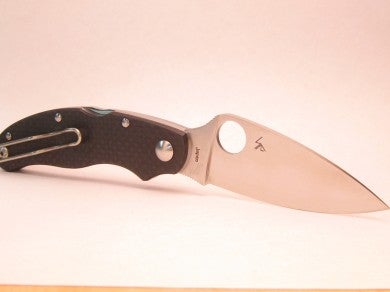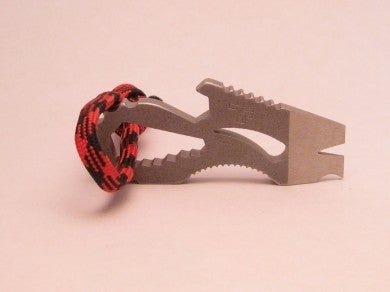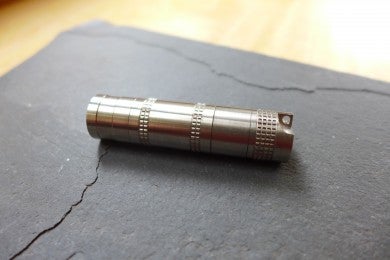Great Alternatives to Hall of Fame Gear
Tony Sculimbrene 11.05.13

I am a huge proponent of getting exactly what you want. Want a Sebezna but can’t afford it? You might be tempted to settle and get something like a Bradley Alias. It’s a good knife, but it’s not a Sebenza. Instead of settling, save your money and get exactly what you want. The pleasure of buying exactly what you want is much higher than the pleasure you’d get from saving $150. This is provided, of course, that you’re not starving, but if you’re contemplating either of these knives then you’re probably not starving.
On occasion, though, you don’t have specific wants. You have more general wants. “I want a small, well made pen that I can take everywhere.” This general want might lead you to the Fisher Space Pen. This article will provide you alternatives to commonly suggested EDC items. If you want something specific, get it. If you have a general want, read on.
Knives
At some point, you have graduated up the ladder from budget blade to Delica/Mini Grip priced blades, to a higher end knife, and now you want to just go for broke and buy the best production knife you can. You’re not wedded to a Sebenza, you just want a really darn good knife. If you’re there, add the Spyderco Caly3 in ZDP-189 to your list. Even though it’s about a third the price of both a Sebenza and a Strider PT/SnG, the Caly 3 is easily in the same class.
The Caly3 is a superbly refined blade, polished over the years like a river rock. The end product is a gloriously effective slicer with some of the best steel on the market. The ergonomics blow the Sebenza out of the water. (Having owned both and being partial to neither, I can say that.) The level of refinement is at least equal to that of the Strider PT. There is a reason why this knife has remained so popular. Its just that good.
When I bought my Sebenza, I had about $350 to spend. I had weighed all of the alternatives, and I came down to a list of four knives: the William Henry EDC 6, the Strider PT, the Small Sebenza 21, and the Caly3. I whittled the list down to two, and the finalists were the Small Sebenza and the Caly3. Now that I have the “gotta have a Sebenza bug” purged from my system, and now that I have owned and used both extensively, I can honestly say that the Caly3 would have probably made me just as happy if not for my serious case of Sebenza-itis.
The Caly3’s blade is a fingerprint magnet, but there are no real drawbacks to the knife otherwise. The clip is great, the CF scales are beautiful and effective, and the ratios are very nice. It is a great knife. It’s a lockback so it won’t swing open as freely as a liner or frame lock, but the pivot is pretty darn glassy.
Pen
Everyone has a tactical pen these days. 9 times out of 10 the refill is a Fisher refill. It’s very durable, writes forever, and is easy to incorporate into products. (It’s very similar in size and shape to the Parker refill, which is almost universal.) The cheapest pen with the Fisher refill is, of course, the Fisher Bullet Space Pen. It’s not that expensive, but, when you break it down, its also not that great. If you are looking for a small, EDC friendly pen, consider the Kaweco Sport (AL Sport review found here) instead of the Fisher. And if you really want to see how a pen should write, then get the Sport Fountain Pen.
One thing gear guys seem to think is that the Fisher refill is chosen because it is a good writing refill. That, my friends, is totally wrong. Its durable, no doubt about that, but it is a terrible writer. The ink is so thick and oily that you get zero page feel. Writing with the Fisher refill is like running your finger through a puddle of motor oil; it’s smooth all right, but there is no feedback whatsoever.
Kaweco’s nibs on the other hand are smooth, maybe not quite as smooth, but the difference is negligible. This difference is caused by the ink. Fisher’s is oil based while fountain pen ink is not. The feedback you get (the way you can feel the page and the texture of the paper) however, is dramatically different. The Kaweco writing experience, even in their most affordable pens, is so refined that there is no comparison between the two.
The form factor is similar as well. Both are ultra compact pens, but the Kaweco’s hexagonal body provides a better grip than the ultra slick Fisher pen. Both have crappy friction fit clips, so it’s a wash there. The Fisher is vastly more durable, but the Kaweco is not as fragile as you might think. Don’t take it on a plane (the pressurization screws with fountain pens) and don’t think you can write with in the rain, and you’ll be fine. Finally, the Kaweco Sport Fountain Pen isn’t that much more money, maybe like $8 more.
One Piece Multitool
You have probably seen them by now–solid hunks of metal cut into useful shapes. They generally have a bottle opener, a pry, and some screwdrivers. The best, or at least most famous of these tools, are the deliciously small batch tools made by Peter Atwood. Getting an Atwood from the man himself is daunting. Batches are released whenever, and they sell out five seconds after whenever. They are excellent tools with ingenious and elegant designs. On the secondary market, tools that sell for $50 or $60 routinely double in price. Some of the more exotic and rare tools sell for much, much more.
There are a lot of people making tools like Peter’s. In fact, as Peter will tell you himself, he is actually working in a long tradition of one-piece tools. Among the best tools out there (other than Peter’s tools) are those produced by TT PockeTTools. Todd’s TT Chopper is probably my single most favorite OPMT design and incorporates a few things even Atwood himself doesn’t have.
If you’re a collector, then availability is a bad thing. If you’re one of the rest of us, its a good thing that tools you use are available to buy. What’s the point, after all, of getting a tool that you’re scared to use?
Flashlight
Lusting over a Cool Fall Spy 007 is the flashoholic equivalent of pining for a Bugatti Veyron. The custom world of flashlights is a deep and interesting gear rabbit hole, but the admission ticket is super expensive. If you look closely, you’ll find a few exceptions. Mac’s Customs makes good stuff for not-that-much dough, but my favorite affordable small batch light is the MBI HF-R. With its tiny form factor, amazing lumens count, and sweet titanium body, it is a great alternative to the kilobuck torch. But its UI is the real stand out. In terms of utility there is nothing better regardless of price. If you’re searching for your first truly nice light, the MBI HF-R should be it.
If you’re not locked in on a specific piece of gear, there are some pretty compelling alternatives out there. Value-wise, you’d be hard pressed to find anything better. But even if you didn’t know the price tag, I think each one of the items above would blow you away. There is really good gear out there, especially if you know where to look.


